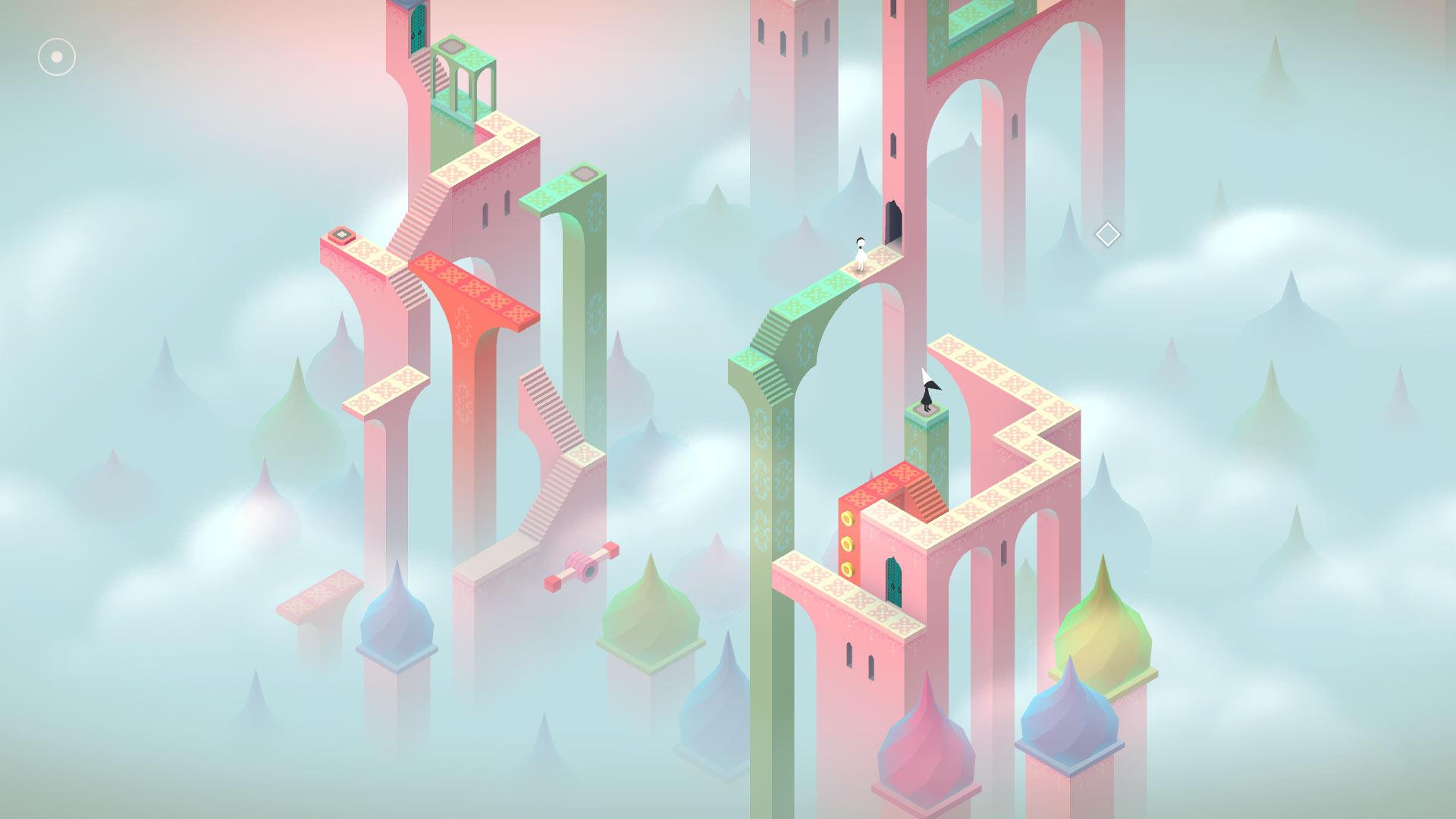In my exploration of Monument Valley, developed for iPad (but also available on phones and computers) for ages 4+ by ustwo, I have delved into how the game intertwines its puzzle mechanics with a narrative that enriches the overall experience. The game presents a world of impossible shapes and architectural wonders that defy conventional physics, creating a visually and intellectually stimulating experience. The mechanics of the puzzles in Monument Valley fundamentally shape the player’s experience by integrating impossible geometries and simple interactive elements, which not only challenge traditional perceptions of space and logic but also enhance narrative immersion, making each puzzle-solving moment both a cognitive challenge and a step further in the emotional journey of the game’s storyline. However, I argue that while the game is aesthetically pleasing and the mechanics are intuitively simple, the constant difficulty level and the balance between puzzle-solving and narrative depth could be better harmonized to enhance player engagement.
One of the most striking aspects of Monument Valley is its use of impossible shapes, which adds layers to both the narrative and my immersion in the story. As I navigated through the game, I was forced to adapt to a new world where the laws of physics did not apply. This mechanic is not just a visual style; it is integral to the gameplay and the story’s themes, challenging me to shift my perspective literally and figuratively.
These two images display my first interaction with a physically impossible shape. While it was jarring at first for me, it set the tone of the world and forced me to separate this game world from our physical world.
The mechanics of Monument Valley are simple and easy to grasp, which emphasizes the game’s spatial environment. The artwork style and accompanying music further enhance this, creating a serene atmosphere that invites exploration. These simple interactions allow for immediate immersion, yet they also ensure that the focus remains on the environment and the unfolding narrative, rather than on complex gameplay challenges. This differs from another puzzle-based game, Portal. Monument Valley captivates with its serene visuals and puzzles based on impossible geometry, integrating these with a gentle narrative that unfolds with progression. Conversely, Portal, developed by Valve, hinges on physics-based challenges facilitated by a portal gun, demanding strategic planning and spatial awareness. Its narrative is delivered with dark humor, contrasting with Monument Valley’s quieter, more introspective storytelling style, and hitting different aesthetics. This highlights Monument Valley’s focus on and emotional engagement, while Portal emphasizes complex puzzles and a compelling, humorous storyline.
Although the simple mechanics are effective for accessibility and initial engagement, I felt that the lack of increasing difficulty in the puzzles occasionally detracted from my sense of achievement. Level-based games traditionally rely on a sense of progression and challenge to maintain player engagement, but in Monument Valley, the puzzles consistently maintain a baseline level of difficulty. In class we have touched on levels either increasing in difficulty or temporarily decreasing in difficulty when a new mechanic is added. However, in this game, even when new mechanics were added, puzzles may have gotten larger (with physically larger structures to navigate), but the difficulty remained consistent. This design choice seems to indicate that the story should take a more central role; however, the narrative elements, while evocative, are interwoven subtly with gameplay, leading to moments where I craved a deeper narrative experience.
This craving was particularly poignant because, at times, I found myself stuck on certain puzzles without feeling motivated to solve them. My frustration arose not from the challenge itself but from a desire to continue exploring the world and uncovering the story. Here, the aesthetics of abnegation—the desire to escape—and the pleasure derived from the game’s sensory experiences were more compelling than the puzzles themselves. The strength of Monument Valley lies in its ability to transport players into its serene world, suggesting that perhaps a greater emphasis on narrative exploration might have enriched the experience more than the static puzzle difficulty.
The ideal integration of narrative and mechanics in Monument Valley would allow the puzzles to serve not only as obstacles but as narrative revelations, deepening my connection to the game. Each puzzle solved should feel like a story unfolding, which occasionally it does—particularly in levels where the manipulation of architecture mirrors the themes of perception and forgiveness central to the narrative. However, to truly elevate the experience, the game could benefit from varying the puzzle difficulty in tandem with narrative peaks, thereby aligning the player’s sense of achievement, and important psychological part of us enjoying games, with key story developments. Such an approach would ensure that the mechanics not only support but enhance the narrative, making each puzzle feel like a meaningful part of the story rather than a mere interlude between narrative moments.
Overall, Monument Valley remains a standout game for its artistic design and innovative use of space and perspective. It invites players into a world where reality is bent and beauty reigns supreme. However, by reflecting on my experience, it is clear that an increased integration of narrative depth with mechanical difficulty could significantly enhance the emotional and intellectual satisfaction derived from the game. As it stands, the game is a beautiful journey, but one that could potentially offer a more impactful and immersive experience if the puzzles and story were more intricately woven together.






